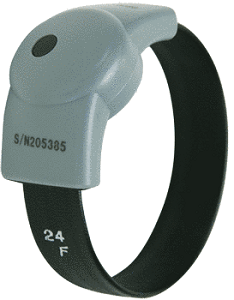How Does EMS Tagging Monitor Curfews?
When people are released from custody and wear an electronic tag, it is most often a community service condition.
A wearable device will be monitoring your home detention curfew (e.g. court or prison order) if you are being tagged.
Furthermore, tagging people guilty of criminal offences, or former prisoners, will often be a condition of an early release from jail.
The courts in England and Wales also have powers to impose electronic monitoring services (EMS). Hence, they may tag a subject in conjunction with the conditions for bail or to monitor Home Detention Curfews.
In most cases, the electronic tag would be attached to an ankle. So, this kind of police tag sends data about the wearer’s location to a ‘base unit’.
The base unit is usually installed at home. But, the court or prison order will determine the exact location for the appliance.
In simple terms:
Being on a curfew generally means you must stay at home during restricted hours of the day. Even so, it can also restrict your movements in another specified location (e.g. outside the home).
The Home Monitoring Unit monitors and checks whether you keep to the hours of your curfew. So, the base unit monitoring box would send an alert to a monitoring center if you break your curfew tag rules.
Note: Electronically monitored curfews, and their associated boundaries, depend on bail conditions, the court, or the different types of prison orders.
Different Types of EMS Tag
The court, parole board, or prison governor decides whether the device you get will be a curfew tag or a location tag.
Curfew Tags
The main function of a curfew tag is to check whether the wearer is in the actual location where they are meant to be during the hours of lockdown (e.g. at home). If not, the device will send an alert to a monitoring centre.
Location Tags
Whereas, a location tag is able to record constant data about the movements of the person wearing it. Hence, it will check whether the wearer is:
- Adhering to the curfew rules and regulations.
- Attending appointments or other programmes that are part of the tagging conditions.
- Going to any restricted areas (e.g. as instructed not to do so by the court or prison).
Responsible officers (e.g. police or probation officers) can use this information to support ‘good behaviour’. They can also use it to raise their concerns about the user’s whereabouts.
Important: Location tags need to be charged for at least one (1) hour per day. Wearing a tag with no battery power is a potential breach of EMS tagging rules – resulting in a court visit or being taken into custody.
Breaching Electronic Tag Conditions
Similar to the usual prison rules and regulations, there are several other ways a subject can breach electronic tag conditions or curfew, including:
- The person leaves the property during the lockdown hours.
- Problems caused by the subject tampering with the electronic tagging device.
Note: The registered contractors of the electronic tag would act immediately in either of these circumstances.
Electronic Tag Problems (ems tag)
Contact the nearest Electronic Monitoring Services if you have problems with your electronic tag. Use the nearest EMS tagging contact number for your location.
Electronic Monitoring Services Phone Number
London, East of England, West Midlands, Wales
Telephone: 08080 090 002
Electronic Monitoring Services Phone Number
South East, South West, North East, North West,
East Midlands, Yorkshire, Humberside
Telephone: 0800 137 291

Phone Call Charges Guide
Check the rates for UK telephone call charges from a landline or a mobile. The cost of making a call to popular numbers like 0800, 0808, 0845, 0870, 03 and others varies.
Home Detention Curfew 2022 Eligibility
Home detention curfews are for prisoners who are serving a sentence between 3 months and 4 years. As a rule, early prison release occurs between two weeks and 135 days earlier than half term of the sentence.
Prisoners serving this length of sentence often get an automatic due date for a release on tag. But, you should regard this as a privilege and not an absolute right for all prisoners.
Related Help Guides
Note: The short video presented by HM Prison and Probation Service contains further information, tips, and what you can and cannot do when wearing a location tag.

